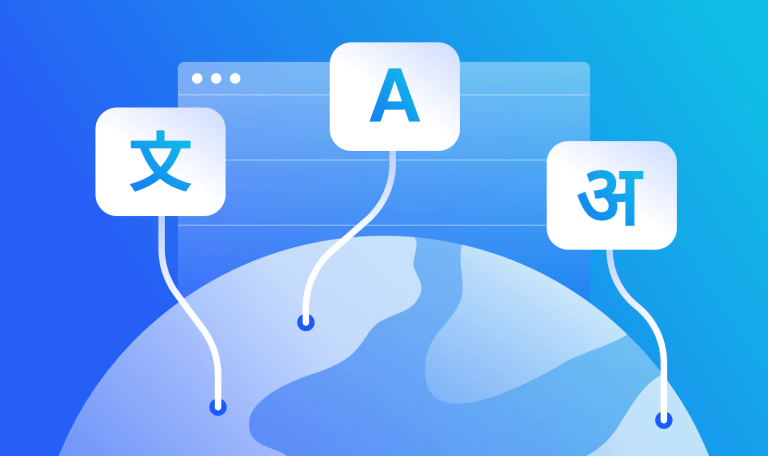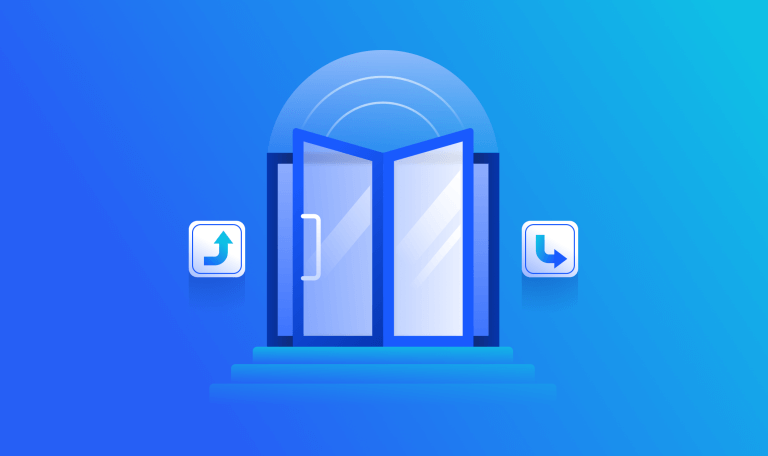How to Create Buyer Personas That Boost Conversions [Template]
![How to Create Buyer Personas That Boost Conversions [Template]](https://www.similarweb.com/blog/wp-content/uploads/2021/04/Buyer-Persona-Cover-Image-768x456.png)
Who’s your target audience? What’s your market?
These are the most common questions that marketers are asked, and for good reason. Your target audience lets you get to know your potential customers and create highly focused marketing campaigns that connect with them.
But, it goes beyond that. To reach your target audience, you need to get inside their heads.
Digging into who your customers are and what they are thinking about day-to-day will be the key to understanding what they are looking for in a product and what type of communication will speak to them.
In addition to considering these big questions, you’ll want to ground your buyer personas by building a complete picture. Give them names, family statuses, hobbies, jobs, and socio-economic statuses. Map out their concerns with potential products, their motivations, preferences, pain points, and brand affiliations.
Taking the time to create accurate buyer personas based on well-researched metrics based on existing customers and or prospective customers will give you and your team the knowledge you need to focus your marketing efforts and marketing analysis tools so they meet your customer in the right place with the right marketing messages.
What are buyer personas?
A buyer persona is a way of imagining and representing your ideal customer based on research and knowledge of your customer base. The idea behind a buyer persona is not to base it on a specific customer, but rather the ideal customer base for your product.
Why are buyer personas important?
Let’s think about it like this:
You’ve created a solid marketing strategy with top-notch campaigns that you know are going to kill it on social media and your blog. Everything is ready: the content, the graphics, the timeline, and it’s time to launch. You send it out into the depths of the internet.
When they start to come in, they’re not producing the return on investment (ROI) you expected. You’re not hitting your goals or seeing the conversion rates.
There are a lot of factors that could be influencing the results here.
But most likely, there’s a disconnect between your marketing messages, where you’re publishing, and your target customers.
Buyer personas help you avoid these types of costly and time-consuming mistakes by honing in on the important details of the different types of customers you appeal to.
Types of buyer personas
When building your buyer persona, there are key considerations for business-to-business (B2B) and business-to-customer (B2C) companies.
B2B brands need to profile companies in their buyer personas (B2B buyer persona). However, it’s important to note that the persona itself is not about the entire business, but the actual person in the target company that can make purchasing decisions. You can draw your inspiration from doing a little poking around on LinkedIn.
B2C companies need to create personas around their ideal customers. Part of this process is identifying the buyer’s pain points, who they are, what their preferences are when it comes to making purchases, and their overall needs in the industry.
There aren’t specific, standard types of buyer personas. Each business should create multiple personas in order to address specific customer needs. This is because each business is unique and has its own marketing needs, so the more personalized the better.
So how do you create a detailed buyer persona?
How to create buyer personas [5 simple steps]
Building your buyer personas is a process that involves various steps. If you guess about your customers, their wants, and needs, you’ll likely create a buyer persona that is off the mark.
Here’s what you should do:
- Research. Where to start? Meet your current customers. They are real people, so take the time to get to know them by inviting them in for interviews or sending them surveys. Once you figure out the common threads between your customers, building the personas will be easier.
- Dive into the numbers. This is where analysis comes in. Where are your customers coming from? How are they reaching you? What devices are they using? What are their demographics? Are there any trends you can identify? You can use tools like Google Analytics or social media to gain a better understanding of your ideal customer base.
- Conduct market research on your competitors. Using Marketing Intelligence platforms allows you to gain insight into your competitors and their markets. This is a critical step for all businesses. For example, with Similarweb, you can see which channels are most popular at bringing in website traffic for your site and competitors. With that information combined with what you already know about your customers, you can create a data-backed customer persona and update it as trends change over time.
- Fill out a buyer persona template. We included a template below, so you just need to personalize it to make sure you’re creating the best buyer personas possible and hitting all of the important points. Take all of the data that you’ve gathered and start filling it into your buyer persona templates.
- Add to your marketing strategy. Now that you’ve got some detailed buyer personas in your marketing arsenal, you can integrate them into your marketing strategy and get to work.
Buyer persona examples
LuluLemon buyer persona example
The massive fashion retailer has many different buyer personas. Here’s an example of one:
Background
Job, career path, family
- Maya
- Account manager at an advertising agency
- Maya has worked at the ad agency for two years and hopes to advance her career.
- Maya isn’t married but has had a boyfriend for 6 months.
- She lives 30 minutes from her parents.
Demographic information
Gender identity, age, income, location
- 24 years old
- Female
- Earns $70,000 a year
- Lives in New York City
- Rides her bike to work
- Practices yoga four times a week
Key identifiers
Communication preferences
- Glued to her iPhone
- Communicates through text messages and social media networks most frequently
Goals
Primary and secondary
- Have access to comfortable athleisure wear to work out
- High-quality products (willing to invest)
Challenges
Primary and secondary challenges
- Prefers to shop online and have the ability to return easily when needed
- Wants to look and feel great in her clothes whether she is at yoga or meeting up with friends
How do we help?
- Make it easy to order great clothing with the click of a button
- Offer high-quality clothing consistently
- Provide a seamless customer experience
Probable concerns
Why wouldn’t she buy our product?
- If she feels the quality of the product is not worth the price
- If Maya is unhappy with how the clothes fit her or look on her
Marketing messaging
How do we describe our product?
- Athletic clothing that you’ll want to wear all the time
Outer buyer persona example
Here is an example of a buyer persona for the garden furniture direct-to-consumer (DTC) brand Outer:
Background
Job, career path, family
- Matthew
- Partner at a law firm (same firm for 12 years)
- Married with two kids (eight and 10)
- Wants to retire early
Demographic information
Gender identity, age, location
- Male
- 42 years old
- Lives in the suburbs
- Works in New York City
- Takes the train to work
- Wife works part-time
- Total household income: $200,000
- Enjoys gardening and home projects in his free time. He likes to invite friends over to watch sports events.
Key identifiers
Communication preferences
- Very busy, relies on his secretary to book and schedule appointments and personal matters
- Uses email frequently, doesn’t enjoy non-essential phone calls
Goals
Primary and secondary
- To have a beautiful and practical home, that he can enjoy in the evenings and on the weekends
- To own practical furniture that his kids won’t destroy
Challenges
Primary and secondary challenges
- Having time to research the right products
- Finding the right products that meet his needs for outdoor furniture
How do we help
ROI on goals, ROI on challenges
- Offer practical, beautiful, and affordable solutions for outdoor furniture
- Offer a wide range of choices to fit different styles
Probable concerns
Why wouldn’t he buy our product?
- Concerns regarding quality and/or practicality of having nice furniture outdoors
- Concerns about wasting money
Marketing messaging
How do we describe our product?
- Practical, beautiful products that will make you love sitting outdoors in your home
HubSpot buyer persona example
Here is an example of a buyer persona for HubSpot, B2B marketing, sales, customer service, and CRM software developer and provider.
Background
Job? Career Path? Family?
- Caitlin
- Content marketing manager at a tech company
- Has been at her job for three years, wants to grow and eventually be a C-level marketing executive
- Married with one toddler who goes to daycare full time
Demographic information
Gender? Age? Location?
- Female
- 33 years old
- Lives in the suburbs
- Works from home two times a week and from the office in San Francisco two times a week
- Husband is a teacher
- Household income is $150,000
Key identifiers
Communication preferences?
- Lives and breathes the digital world
- Constantly on email, Slack, WhatsApp, social media
- Doesn’t have voicemail, doesn’t like phone calls
Goals
Primary and secondary
- Improve her company’s online presence through effective content strategies
- Access to courses to create better marketing plans
Challenges
Primary and secondary
- Knowing which content will perform best
- Having the information she needs at hand quickly make decisions on upcoming campaigns
How do we help
ROI on goals? ROI on challenges?
- Offer data to personalize your marketing strategy
- Quick and easy access to essential marketing and content data
Probable concerns
Why wouldn’t she buy our product?
- Unsure it will be worth the investment
- Needs approval of higher-ups
DIY Buyer Persona Templates
Having a buyer persona template to get you started makes the process of developing your buyer personas easier.
By using a template you can make sure that you don’t leave any important details out. A template can also guide you in asking the right questions when speaking to your customers or when doing market research before writing the persona itself.
Ready to get started?
How to use buyer personas for your business
Once you’ve created your buyer personas, it’s time to integrate them into your strategy.
Buyer personas can be used in a wide range of areas within a company. These include marketing, customer service, and sales teams. Understanding the different types of customers can help salespeople talk to potential customers and marketers create powerful marketing messages to reach prospective customers.
Buyer personas need to be adjusted over time as your business needs evolve. Your customers may change or you may add new products that are relevant for different personas. In order to keep them up-to-date, you need access to real-time data to conduct market research on your competitive landscape
Buyer personas FAQs
What are buyer personas?
A buyer persona is a representation of your ideal customer, based on your customer base.
Why are buyer personas important?
Buyer personas are important to implement to hit your targets, goals, and conversion rates. Buyer personas help you connect your messaging to your target customers.
How do you create buyer personas?
You can create buyer personas by researching your customers and conducting competitor market research. Once you’ve collected this data, use our buyer persona template and add it to your marketing strategy.











